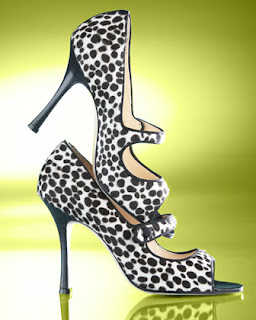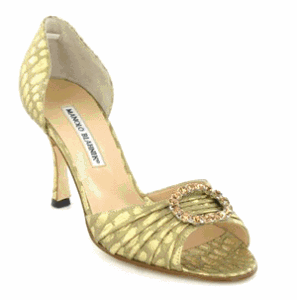The later half of 20th century saw a rise in luxury shoe brands – both in couture and prêt. Manolo Blahnik are one such label, that became landmarks in the world of high fashion.
MANOLO BLAHNIK: CREATIVITY FOR THE FEET…
 Carrie Bradshaw’s fanaticism for shoes reaches a new height when it comes to Manolo Blahnik. Remember her pleading with a mugger on the streets of New York, “Please sir, you can take my Fendi baguette; you
Carrie Bradshaw’s fanaticism for shoes reaches a new height when it comes to Manolo Blahnik. Remember her pleading with a mugger on the streets of New York, “Please sir, you can take my Fendi baguette; you
can take my ring and my watch, but don’t take my Manolo Blahniks.” Unfortunately for Bradshaw, the mugger did that and ran off with her favourite pair of strappy sandals!
Manolos are not just shoes, but a fashion cult! Exquisitely detailed, unabashedly luxurious, and impossibly sexy, the shoe brand is the epitome of sophistication and taste. The man behind the beautifully handcrafted shoes, Manolo Blahnik, continues to be humble. Working alone without assistants and apprentices, he is solely responsible for the design of every one of the thousands of shoes that bear his name. He is involved in each stage of the production of 400 handcrafted shoes each year – from the sketches of his shoes to chiselling the wooden heels to even sketching the illustrations of his advertising campaigns. In Eric Boman’s Blahnik by Boman: Shoes, Photographs, Conversation, he claims, “My shoes are not fashion. They are gestures; objects that happen to be fashion.”
 THE JOURNEY BEGAN…
THE JOURNEY BEGAN…
Born in the Canary Islands in 1942, Blahnik was influenced by his mother’s interest in design. While holidaying in New York in 1971, he was suggested by Paloma Diana Vreeland, the editor-in-chief of US Vogue, to “make shoes.”
Back in London, Blahnik began designing men’s shoes for Zapata, a Chelsea-based boutique. His designs were vividly coloured versions of the vintage co-respondent shoes he admired in old movies. The shoes looked extraordinary – one pair sported red cherries entwined around the ankles and a vertiginous heel – but were structurally perilous.
Blahnik has had no formal training in shoe making. He visited the factories during production to learn about the process. Gradually he learnt the craft. “It took many years to realise how to do shoes how to make them lovely and arty and technically perfect,” admits Blahnik.
INFLUENCE AND EXPANSION
His shoes at Zapata were soon much sought after – from the editors of Vogue, such as Grace Coddington, to the young actors like Marisa Berenson, Jane Birkin and Charlotte Rampling. In 1974, he became the first man to appear on the cover of British Vogue, photographed with Angelica Huston by David Bailey.
He bought out the owners of Zapata with help of his sister Evangelina. In 1978, he entered the US fashion scene by creating a collection for Bloomingdales. Next year, he opened his first US store on New York’s Madison Avenue. His collaboration with fashion designers like Calvin Klein, Isaac Mizrahi and John Galliano gave him a perspective about designing for a broader market. Soon, he opened 13 shops across continents in major cities including Tokyo, New York, Las Vegas, Dubai, London, Moscow and Madrid.

INSPIRATION MAKES THE JOURNEY GO ON…
A combination of ‘occasional avant garde looks for the affluent few’ and ‘good solid looks that will wear forever’ became the success formula for Blahnik. His inspiration continues to be Visconti and Cocteau films, and the paintings of Velázquez, El Greco and Zurburán. He admired the works of Cristobál Balenciaga, Coco Chanel and Yves Saint Laurent.
At the age of 64, Blahnik has no plans to retire. Unlike his design competitors, Blahnik still owns his company and has never considered selling out, despite several offers. He says, “The day I start to get bored, I will stop – but I don’t think I will. When do I have the time to get bored?”
—
Published in FnL